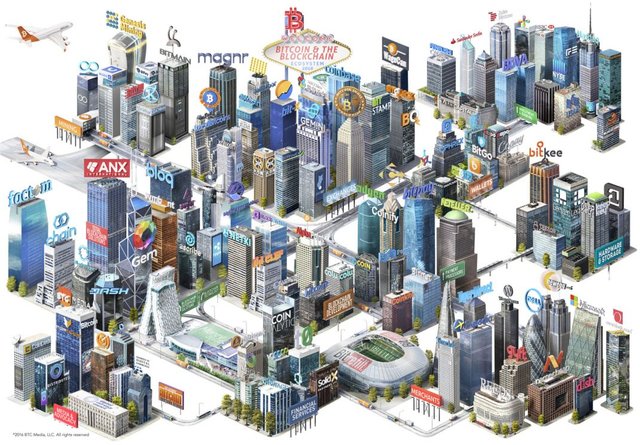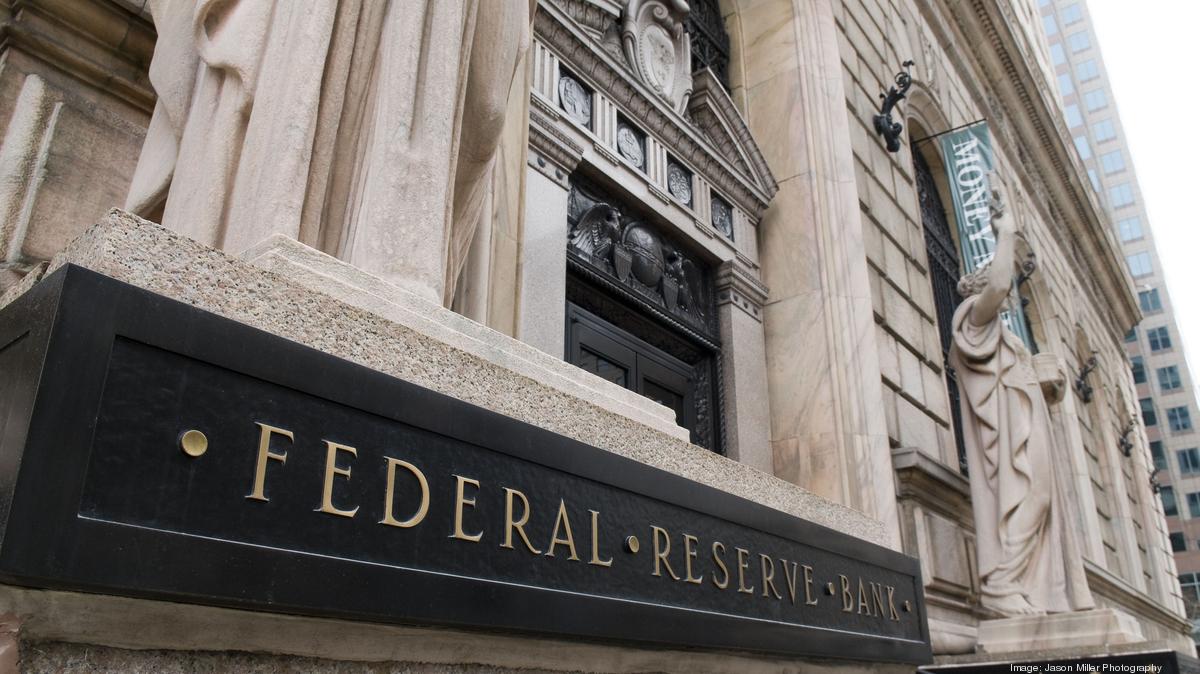Chapter 7: Leadership For The Next Era
Content:
I. Background
II. Who Will Lead
III. Blockchain Ecosystem
IV. Central Banks in a Decentralized Economy
V. Regulation vs Governance Framework
VI. Types of Governance Networks
VII. Conclusion

I. Background
"Prolific" is an adjective that should precede all titles used to describe the 21 year old,
Vitalik Buterin, Ethereum Founder
Buterin created ethereum as an open source project when he realized that blockchain could go far beyond currency and that programmers needed more flexible platform than the bitcoin blockchain provided."Within a half century, we will have abandoned the model that you should have to put in eight hours of labor every day to be allowed to survive and have a decent life".
"Instead of putting the taxi driver out of a job, blockchain puts Uber out of the job and lets the taxi drivers work with the customers directly". Blockchain doesn't eliminate jobs so much as it changes the definition of work
Ethereum's design neatly captures in an enduring faith that individuals will do the right thing when equipped with the right tools.
II. Who will Lead?

Since the end of world War II, state-based institutions have governed important global resources. Three of the most powerful:
These organizations were hierarchical by design, because hierarchies were the dominant paradigm during the first half of a war-torn century. But these industrial-scale solutions are ill suited to the challenges of the digital era. the rise of the internet marked a significant departure from the traditional culture of governance.
Code alone is just a tool, for the blockchain technology to reach its next stage and fulfill its long term promise, humans must lead. we now need all constituents , all stakeholders in the network to come to gather and address some mission-critical issues. Instead of state-based institutions, we need collaborations of civil society, private sector, government, and individual stakeholders in non-state networks. call them Global solution Networks (GSN). These web-based networks are now proliferating, achieving new forms of cooperation, social change, and even the production of global public value.
Good governance of such complex global innovations is not the job of government alone. Nor we can leave it to the private sector: commercial interests are insufficient to ensure that this resource serves society. Rather, we need all stakeholders globally to collaborate and provide leadership.
III. Blockchain Ecosystem

Stakeholders Involved:
1. Venture Capitalists
2. Banks and Financial Services
3. Developers
4. Academia
5. Governments, regulators, and Law Enforcement
6. Non-government Organizations
7. Users
Women Leaders in Blockchain:
As many have observed, the blockchain movement is overpopulated with men. In technology and engineering, males still outnumber females by a wide margin. However, high-profile women are founding and managing companies in the space:
1. Blythe Masters, CEO of Digital Asset holdings
2. Cindy McAdam, President of XAPO
3. Melanie Shapiro, CEO of Case Wallet
4. Joyce Kim, Executive Director of Stellar Development Foundation
5. Elizabeth Rossiello, CEO and Founder of BitPesa
6. Pamela Morgan, CEO of Third Key Solution
7. Arianna Simpson, Former head of business development at BitGo
8. Jalak Jobanputra, Investor whose VC fund focuses on Decentralized technology
9. Primavera De Fillippi, Faculty associate at the Berkman Center at Harvard and permanent researcher at the National center of Scientific Research in Paris.
10. Elizabeth Stark, Yale Law School Professor
11. Perianne Boring, Founder of the Chamber of Digital Commerce, a trade-based association in Washington DC.
The Senator Who Would Change The World:
Doug Black, Senator from Calgary, Alberta (Canada)
His thoughts:
"How do we create an environment that encourages innovation as opposed to stifles innovation? that's unusual for a government to take that point of view from the get-go"
"There's risk in anything, there's risk in fiat currency. We can manage risk at some level, but lets also create an environment where innovation can be fostered".
"Government should be looking to start utilizing this technology, which would be a powerful message, if you want to be the hub for innovation and a pioneer in the sector, put your money where your mouth is, and start innovating yourself".
"government should take a light touch on regulation"
IV. Central Banks in Decentralized Economy

Finance may be the second-oldest profession, but central banking is a relatively modern phenomenon. The Federal reserve is the worlds most powerful central bank. Central banks, in their relatively short history, have gone through multiple reincarnations, the last one a big shift from the gold standard to a floating-rate system of fiat currency.
Because digital currency challenge the role of Central banks in an economy, we might expect Central bankers to oppose blockchain technology.
The Fed pioneered electronic clearing of funds by championing the Automated Clearing House (ACH) system when all checks were all settled and cleared manually. However, like Central Bankers elsewhere, the fed embraced unorthodox and untested policies, most famously (or infamously) the Quantitative Easing program in the wake of the 2008 Financial Crisis., when it used newly minted money to buy financial assets such as government bonds at an unprecedented levels.
so, How do central banks perform their role effectively in a global market with one or many cryptocurrencies outside their control? after all, monetary policy is a key lever in a central bankers toolbox to manage the economy, particularly in times of crisis. what happens when that currency is not issued by a government but exists globally as part of a distributed network?
Potential Solution:
- Central banks could simply begin holding reserves in Bitcoin, as they do in other currencies, and assets such as gold.
- Could also require financial institutions to hold reserves at the central bank in these non-state currencies
These holdings would enable a central bank to perform their monetary role in both fiat and cryptocurrencies and help central banks respond more quickly.
Bretton Woods is a good model. how about a second meeting of the minds, not conducted in smoky rooms behind closed doors, but in an open forum where various stakeholders, including the private sector, the technology community, and governance institutions could participate?
The story of central banks reveals a bigger issue: "governments often lack the know-how to respond in a fast-changing world". They should look to other stakeholders in the network and other central banks globally to share ideas, collaborate on substantive leadership issues, and move the agenda forward.
V. Regulation vs Governance Framework
Important shifts are revealing the limits of government in an age of accelerating innovation. Government cannot hope to oversee and regulate every corner of the financial markets, technology, or the economy, because there are simply too many actors, innovations, and products. if anything, the experience illustrates that governments can at least force transparency to shed light on behavior and create change.
Citizens can help enforce regulations, too, perhaps by changing their buying behavior or, armed with information, by organizing public campaigns that name and shame offenders. governments must acknowledge that their role in governing the blockchain will be fundamentally different from their historical role in monetary policy and financial regulation.
lets be clear: Regulation is about laws design to control behavior. governance is about stewardship, collaboration, and incentives to act on common interests. government will participate as players in a bottom-up governance ecosystem rather than as enforcers of a top-down regime of control.
Effective governance come from a multi stakeholder approach where transparency and public participation are valued more highly and weigh more heavily in decision making.
Critical questions and develop a framework for answering them:
1. How do we design such a governance model?
2. Do we create a new network from scratch?
3. In whose interest will a blockchain governance network act and to whom is it accountable?
4. Will nation-states actually cede any authority to a global network?
Overall, the ecosystem that governs the Internet is rich with lessons. that it has become a global resource in so short a time is astounding, in no small part thanks to strong leadership and governance and despite the powerful forces against it. Whereas the internet democratized information, the blockchain democratized value and cuts to the core of traditional industries like banking. clearly there will be a regulatory role to ensure that consumers and citizens are protected.
VI. Types of Governance Networks
What does the new governance model look like? these are ten types of Global solution networks (GSNs):
1. Knowledge Networks
- Develop new thinking, research, ideas, and policies that can help solve global problems.
- Foster a culture of openness and inclusion, be transparent, and involve multiple stakeholders
- initiative: MIT Digital Currency Initiative (http://dci.mit.edu/)
2. Delivery Networks
- Delivers the change it seeks, supplementing or even bypassing the efforts of traditional institutions
- Disseminates knowledge, influences policy.
- initiative:ICANN, International Corporation for Assigned names and Number ( https://www.icann.org) and COALA, Coalition for Automated Legal Applications (https://coala.io/#/home)
3. Policy Networks
- Support policy development or create an alternative policy, whether government support them or not.
- To turn decision making from the traditional hierarchical broadcast model to one of consultation and collaboration
- initiative: The Chamber of Digital Commerce (https://digitalchamber.org/)
4. Advocacy Networks
- Seek to change the agenda or policies of governments, corporations, and other institutions.
- Upend how traditional institutions solve problem.
5. Watchdog Networks
- Scrutinize institutions to ensure that they behave appropriately
- Topic range from human rights, corruption, and the environment to financial services.
- Drive public debate, boost transparency, and ignite movements for change.
6. Platforms
- Platform like, change.org empower individuals to initiate campaigns in support of social causes from human rights to climate change.
- Imagine a platform that allowed regular citizens to aggregate and scrutinize data, proving a strong bulwark against creeping showstoppers of scalability, government encroachment, or unsustainable energy use
7. Standards Network
- Non-state based organizations that develop technical specifications and standards for virtually anything, including standards for internet itself.
- Determine the standards that form a fundamental building blocks for product development and allow a promising innovation to make the leap to mass adoption
- The Internet Engineering Task Force
8. Network Institutions
- Some networks provide a wide range of capabilities, they are not state-based but true multi stakeholder networks. the value they generate can range from knowledge, advocacy, and policy to actual delivery of solutions.
- World Economic Forum (leading network institution)
- Clinton Foundation
- Bill and Melinda gates Foundation
- Influencing government policy making, making them a critical link, and strategic partner in overcoming a number of major showstoppers.
9. Diasporas
- Global communities formed by people dispersed from their ancestral lands and united by culture and identity with their homeland.
- Address and help solve common global problems
- Blockchain actually creates time and resources for these people to pursue other wage-earning opportunities or entrepreneurial endeavors.
10. Governance Networks
- Combine all the features and attributes of the nine other GSN types.
- The network should be meritocracy, meaning that the community would champion viable proposals regardless of the rank and status of the proposer.
- The network should be transparent, releasing all of its data, documentation, and meeting minutes for public scrutiny.
VII. Conclusion
A Blockchain governance network is critical to stewardship of this global resource. it holds both promise and peril. "It's how we wield it". In previous epochal transitions, societies took action to implement new understandings, laws, and institutions. These transformations of civilization took time, usually centuries, and were often punctuated by strife or even revolutions.
The disruptions of today are moving so fast they are getting beyond the capacity of individuals and institutions to comprehend them, let alone manage their impact. So, as we enter this second generation of the Internet, its time for a manifesto for the Digital age, call it "The declaration of Interdependence". Digital citizens have rights - access to digital infrastructure, media literacy, lifelong learning, and renewed freedom of speech online without the fear of surveillance.
Let's work to provide "Collective leadership" in distributing opportunity and prosperity at the point of origin, rather than simply redistributing wealth after its been created by traditional class structures. These are exciting and perilous times, as tomorrows business leaders, we need to realize the rules of the game and how are they changing. How will we be affected and what can be done?